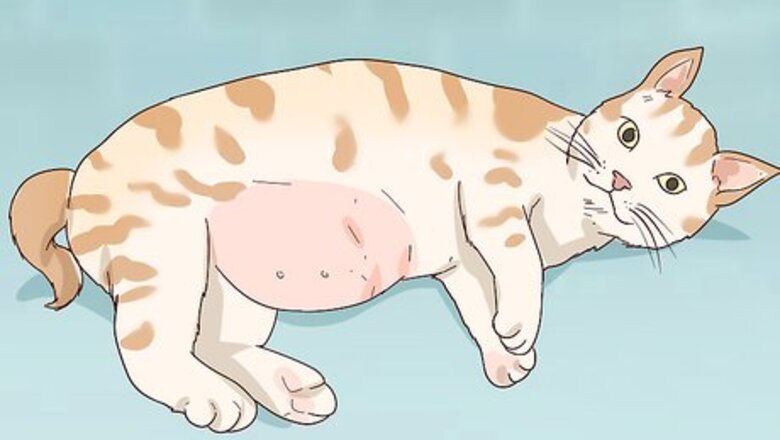
views
Observing the Symptoms
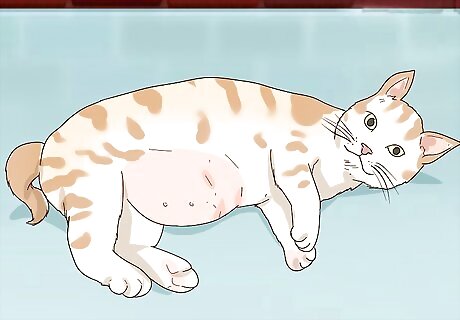
Look for a distended abdomen. Cats with pyometra will often develop a distended abdomen. A distended abdomen is an indication of infection, digestive issues, and other serious complications. Look for: Decreased fat or muscle on the abdomen. A bloated appearance around the area of the stomach. A distended abdomen might also appear to have a tubular growth. This tubular growth is the infected area of the cat’s reproductive system.
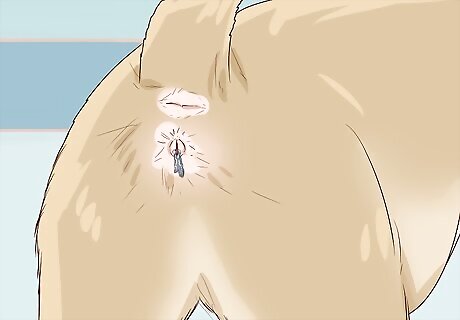
Observe vaginal discharge. Vaginal discharge is one of the most obvious signs of pyometra in cats. Ultimately, vaginal discharge is an indication of infection and other problems associated with pyometra. However, your cat will only have discharge if the pyometra is open, allowing pus to drain out. Absence of discharge does not mean that you can rule out pyometra if your cat has other symptoms. The discharge may: Smell bad or foul Be yellow or white Contain small amounts of blood
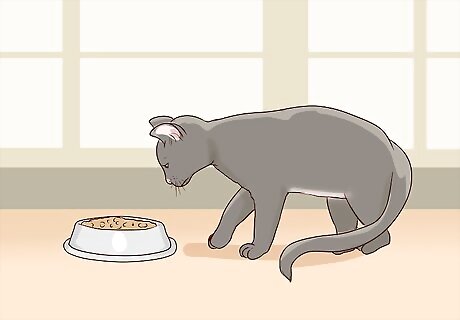
Notice appetite loss and digestive issues. Cats with pyometra may have a variety symptoms associated with their digestive or intestinal tracks. As a result, you should take symptoms such as loss of appetite very serious. Some problems include: Vomiting Queasiness or nausea Tiredness
Consulting Your Veterinarian
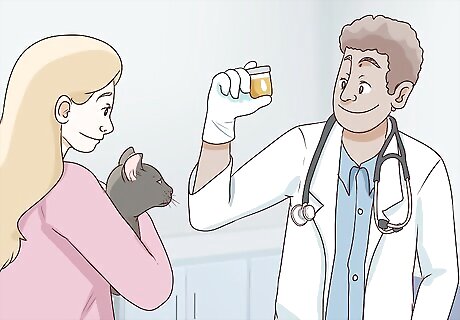
Allow your vet to conduct a culture of the cat’s bodily fluids. One of the first things your vet may do is to culture your cat’s vaginal discharge or urine. This is important, as the vet will need to determine what antibiotic will aid in your cat’s recovery. A culture is when the vet allows the bacteria from your cat’s body fluids to grow in a sterile environment. Since pyometra is an emergency situation and a culture can take 48 hours to show results, ask your vet if they can examine the cat's vaginal discharge in the vet's office to look for cytology if vaginal cytology can be performed. This could allow them to start your cat's treatment earlier.
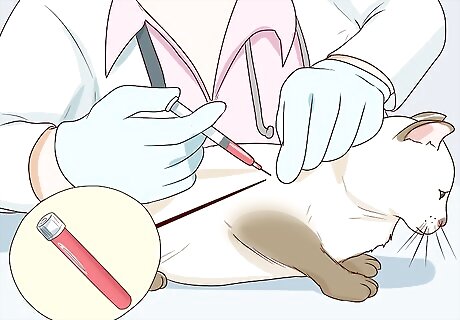
Have your vet run blood work. Blood diagnostics are important so your vet can check critical levels. Without running diagnostics, your vet won’t be able to rule out other conditions or problems. In the end, blood work will help confirm a diagnosis of pyometra. Blood tests will check the level of red and white blood cells – this will give an indication of the strength of the cat’s immune system. Blood tests can identify other problems that might exacerbate the cat’s pyometra.
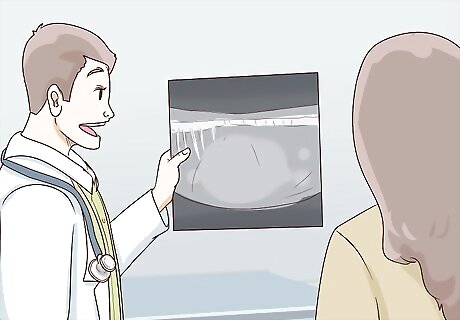
Permit your vet to take X-rays. Your vet will likely take several X-rays of the uterus to get a better idea of the scope of the infection. Without X-rays, your vet may not be able to come to a diagnosis. Your vet will take a minimum of 2 X-rays. X-rays may give your vet an idea of whether they need to resort to surgical intervention as a treatment. After examining X-rays, your vet may have to conduct other imaging diagnostics like an ultrasound to rule out other conditions.
Treating Your Cat
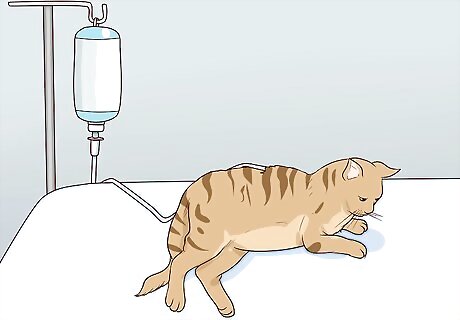
Provide intravenous fluids. Intravenous fluids are important in keeping your cat hydrated. Without intravenous fluids, your cat’s body may not be able to fight the infection and make a full recovery. Your veterinarian may provide: Intravenous fluids containing potassium chloride Hartmann's solution
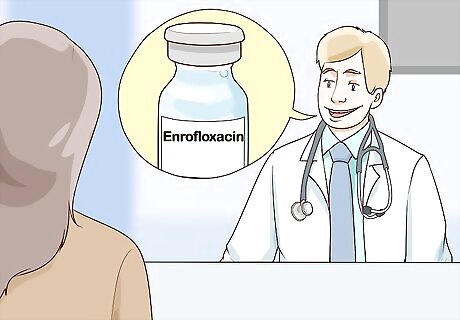
Give the cat prescription medicine. You vet will also prescribe you medicines to help your cat overcome infection and fight the other symptoms of pyometra. This is important, as cats with pyometra are susceptible to infection. Your vet will likely prescribe a broad-spectrum antibiotic, like enrofloxacin or amoxicillin. You should give your cat the antibiotic as prescribed. This may be once a day. Your vet may consider prescribing prostaglandin, an enzyme that aids the body's recovery from infection, over the course of 3 to 5 days. In cases in which the infected part of the cat’s reproductive system has grown large, medicinal treatment may only have limited benefit.
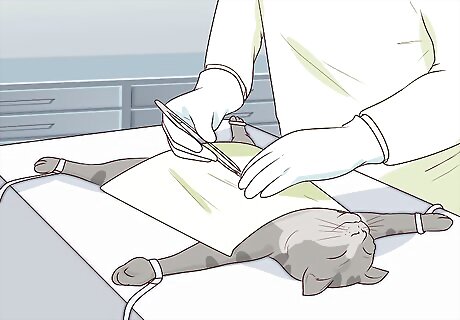
Allow your vet to perform surgery on the cat. In many cases, your vet will need to perform surgery to remove infected parts of the cat’s reproductive system. Severe cases of pyometra will require surgical intervention. Your vet will likely culture any part of the uterus that is removed. This will enable them to get a better idea of the type of bacteria afflicting your cat. Most vets will recommend spaying the cat, which will include a complete removal of the uterus and ovaries. This surgery can cure your cat. Surgery will likely have the impact of ending the cat’s ability to reproduce.
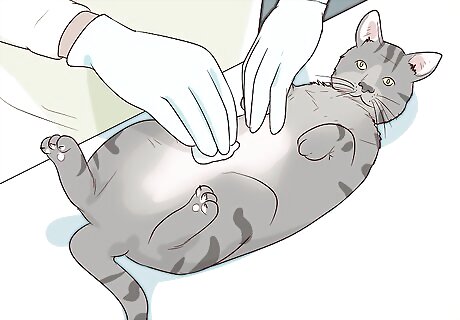
Provide aftercare. After surgical or medical treatment, you’ll have to provide your cat with a certain level of care. Without providing aftercare, your cat could relapse and develop potentially serious infections. When providing aftercare, remember: Keep the incision clean. Make sure to provide your cat with antibiotics and other medicines on a regular basis. Stay in touch with your vet to make sure any complications are treated quickly.














Comments
0 comment